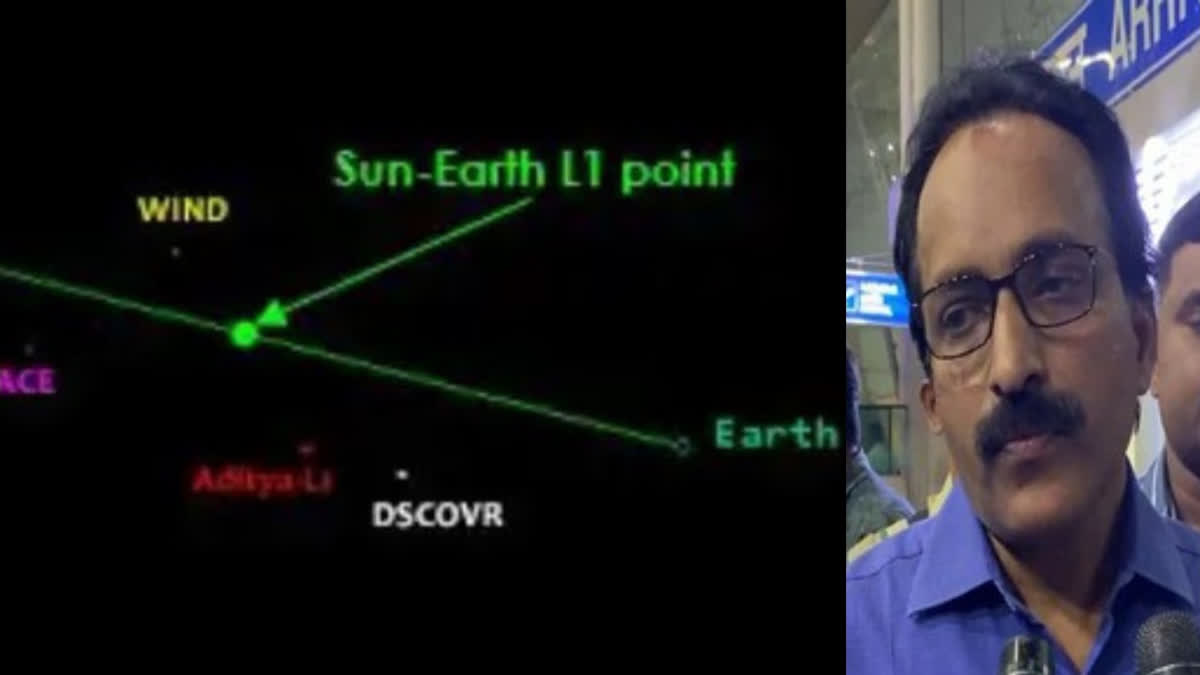Madurai (Tamil Nadu) : Indian Space and Research Organisation (ISRO) Chief S Somnath on Sunday said that India's first solar mission, Aditya-L1 spacecraft will reach the Lagrange Point 1 (L1) by mid-January.
"It is working very well... Currently, it takes almost 110 days to travel from Earth to the L1 point. So by the middle of January, it will reach the L1 point. Then at that point, we will do the insertion into the Lagrange Point. That is called the halo orbit. It's a big orbit. So that will happen by the middle of January", Somanath told reporters in Tamil Nadu's Madurai.
It is worth mentioning that after the successful soft landing of Chandrayaan-3 near the South pole of the moon, the ISRO launched the country's maiden solar mission -- Aditya-L1 from the Satish Dhawan Space Centre in Sriharikota on September 2. It carried seven different payloads to have a detailed study of the sun, four of which will observe the light from the sun and the other three will measure in-situ parameters of the plasma and magnetic fields.
Aditya-L1 will be placed in a halo orbit around Lagrangian Point 1 (or L1), which is 1.5 million km away from the Earth in the direction of the sun. It is expected to cover the distance in four months' time. Aditya-L1 will stay approximately 1.5 million km away from Earth, directed towards the Sun, which is about 1 per cent of the Earth-Sun distance.
The Sun is a giant sphere of gas and Aditya-L1 would study the outer atmosphere of the Sun. ISRO had said Aditya-L1 will neither land on the Sun nor approach the Sun any closer. In addition, the ISRO Chief also spoke about the 'Gaganyan' mission
"Test Vehicle-D1 mission is scheduled for October 21. This is the Gaganyaan program. The Gaganyaan program requires testing, demonstrating the crew escape system. The crew escape system is a very critical system in Gaganyaan. If anything happens to the rocket, you have to save the crew by moving the crew away from the exploding rocket at least by two km. So this test is to demonstrate the crew escape system in one condition of the flight. So this condition we are demonstrating is called the Transonic condition...", Somnath said.
Also Read : To the Sun, Aditya-L1 successfully lifts off from Sriharikota: ISRO
"Every month we will have at least one launch. After this test vehicle launch, we have GSLV. Then we have SSLV. Then after that, the Gaganyaan unmanned mission will be there. In between there will be a PSLV launch. So before January, you will see at least 4-5 launches", he added. According to the ISRO, the Gaganyaan project envisages a demonstration of human spaceflight capability by launching a crew of three members to an orbit of 400 km for a three-day mission and bringing them back safely to earth, by landing in Indian sea waters.



